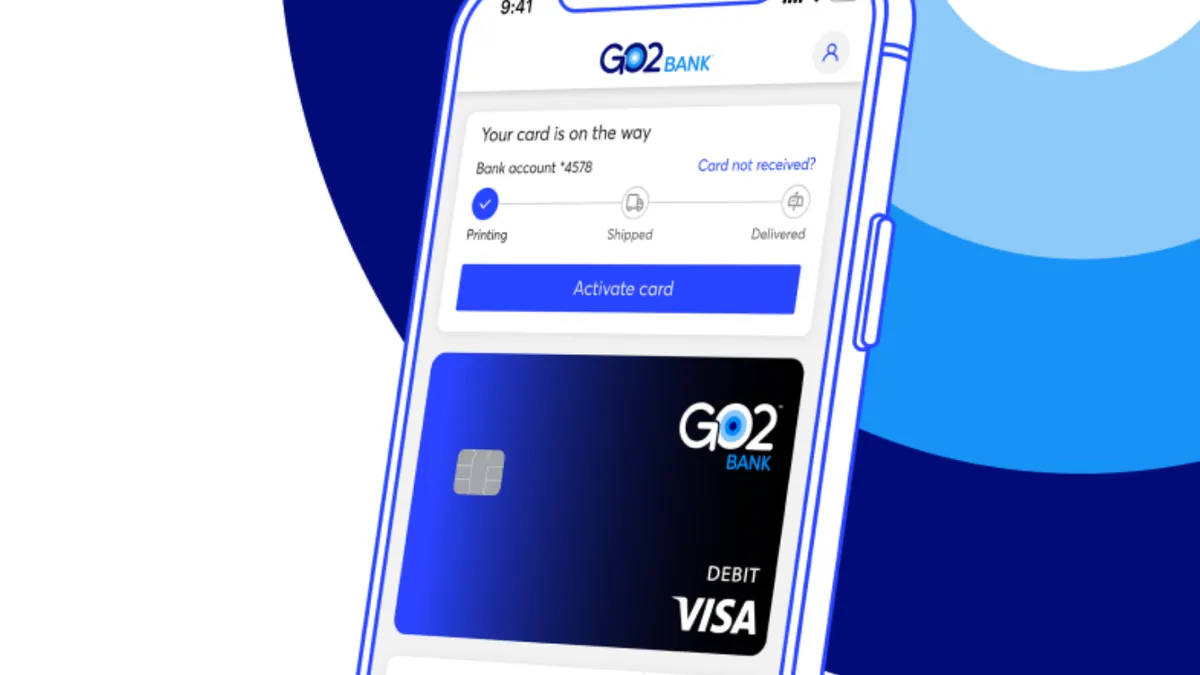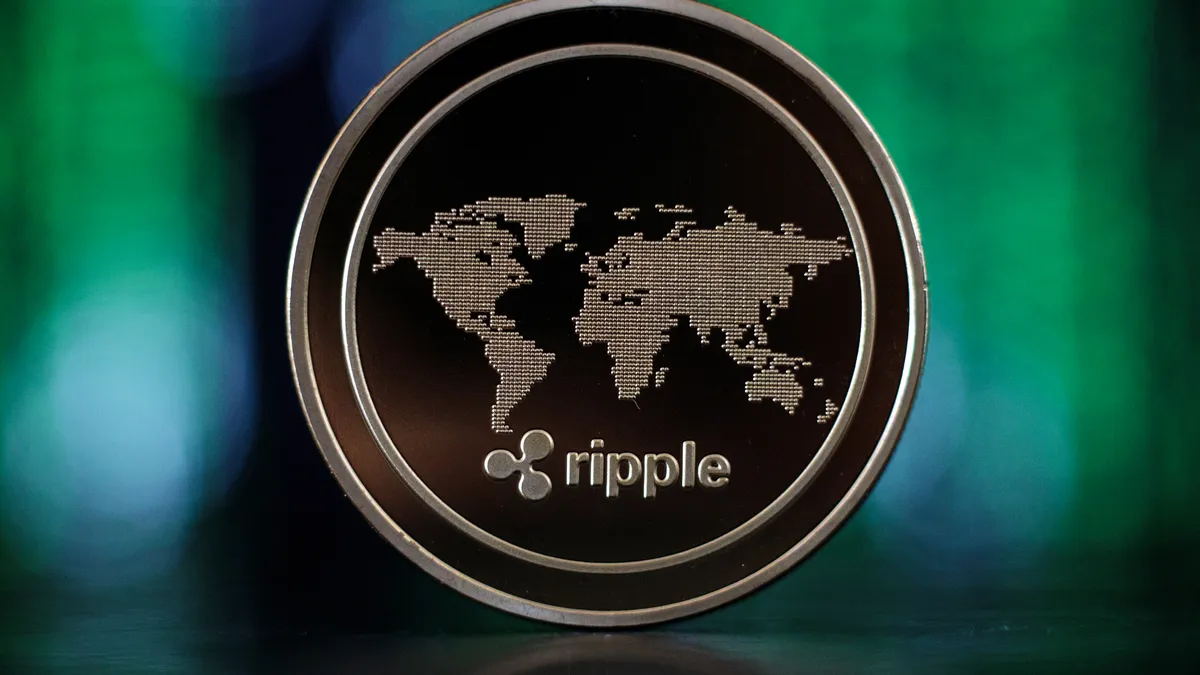Green Dot, the prepaid card company-turned-bank, has come a long way from the launch of its first debit card for teens two decades ago.
The Pasadena, California-based company, established in 1999, became a bank holding company after its acquisition of Bonneville Bank in 2011. It now claims to serve 33 million customers through its retail and direct-to-consumer debit card product offerings.
In recent years, Green Dot has been growing its white-label fintech solutions for other companies through banking-as-a-service (BaaS) partnerships. During the COVID-19 pandemic, the company quickly added new BaaS partners, including Amazon, Kabbage, Google, Gig Wage, Intuit and others.
“These partnerships and investments illustrate our new BaaS strategy to partner only with select high-impact and high-potential companies, looking for a true end-to-end partner to deliver modern, seamless and accessible banking and payment solutions to consumers, and small businesses,” CEO Dan Henry said in February.
Green Dot helps financial and nonfinancial brands launch tailored, tech-enabled money services, through a platform it says provides an “integrated bank, program management and enterprise-grade [application programming interfaces].” Offerings it supports include digital banking and digital money movement, including instant payments and tailored reward programs. Its partners include Stash, Wealthfront, Apple Cash and Uber.
It sees BaaS as a long-term growth driver, alongside its retail and direct-to-consumer digital offering GO2bank which launched this year. In March, the company named Amit Parikh, who previously worked in payments at Apple, as executive vice president of its BaaS division.
Asked about BaaS priorities, Parikh noted the company is focusing on customer segments with which it has a breadth of experience. Green Dot is also interested in expanding BaaS offerings beyond payments to include credit products.
“We cannot stay still,” he said. “Green Dot’s core is the low- to moderate-income consumer. [It’s about] how we help that consumer and we can’t just provide payments-related features over time.”
Parikh declined to comment on revenue trends from Green Dot’s BaaS business, but he said the area was “still in investment mode” — feedback echoed by Henry during the bank’s first-quarter earnings call last week.
“Our banking platform services, or BaaS business, is relatively young, and we remain focused on investing in and strengthening our platform while deepening our partnerships and delivering stability and scalability for years to come,” he said. “Some of our BaaS contracts were designed with a flat fee, creating a declining margin situation. Our plan is to evolve the way we frame these agreements moving forward.”
For the first quarter of 2021, revenue from Green Dot’s business-to-business services segment — which includes BaaS and a payroll platform the bank offers to businesses — grew 44% to $106 million. However, year-over-year profit was down 12%, possibly reflecting the investments the company is making and legacy flat-fee BaaS contract structures. Meanwhile, expenses from Green Dot’s business-to-business segment grew 64%.
Building on strengths
Green Dot is leaning on its differentiators — its experience, bank license and established partner network. It’s the issuer for the Walmart MoneyCard, and its offerings through the retailer drove 27% of total operating revenue for 2020.
“Having our bank, our direct-to-consumer business, having a BaaS business, and a retail network is the advantage that we have,” Parikh said. “Some, if not all [of those things], are very hard to replicate.”
But BaaS competition is coming from banks eager to work with fintechs (including MetaBank, Evolve Bank & Trust and Piermont Bank) and startup financial infrastructure providers that work with banks to offer BaaS products, including Moov, Treasury Prime, Synctera, Synapse and others.
Ron Shevlin, research director for Cornerstone Advisors, said the market for fintech “plumbing” providers now includes embedded finance — which he defines as “enabling nonfinancial services companies to provide banking services” – and embedded fintech — which he characterizes as the “integration of fintech products and services into financial institutions’ product sets, websites, mobile applications and business processes.”
While the complexity of the market may add pressure on “old-school” BaaS players like Green Dot, its embedded finance play is an advantage, Shevlin said. “They've got the banking license [and] they've got the technology tools that enable a nonfinancial provider to provide financial services,” he said.
Ease of partner integration is another feather in Green Dot’s cap, said Francisco Alvarez-Evangelista, a research associate at Aite Group. “Unlike most other banking-as-a-service platform providers, Green Dot [is] more fully turnkey,” he said. “It’s able to issue on its banking license, it’s able to ‘program-manage’ all sorts of prepaid work, and … process [transactions] through its own processing arm.”
But as Green Dot looks to expand its BaaS products beyond its core customer sets, evolving the technology will be an important consideration in its march upmarket, analysts said.
“Because Green Dot’s technology and consumer focus has been so narrowly focused on the low- to middle-income consumer, their tech stack might not be well-suited for brands that support other segments of consumers,” Shevlin said.
The partner approach
Green Dot has long positioned its enabling BaaS tools and expertise as selling points.
“Our partners are in the driver’s seat – they design the vision,” Dov Marmor, Green Dot’s former head of BaaS, said in 2019. “We have to take that and make it safe for the consumer and approved by the regulators, and you can scale from zero to 100 in a very short period of time.”
Marmor left Green Dot in 2020 and is now chief operating officer for North America at Railsbank.
Parikh said he is less worried about competition than meeting the needs of Green Dot’s client base. He also said Green Dot acts as a trusted adviser to its BaaS partners, letting them take the lead while offering advice where appropriate.
“Our success is ensuring that there’s a good give and take between our partner and us,” Parikh said.
Green Dot recommended a new variation on cash-back rewards designed to garner enhanced customer loyalty for one of its BaaS partners.
“In the investing and wealth management space, rather than implementing a more common cashback rewards feature for our partners, we recommended and implemented a ‘stock-back’ alternative that would resonate more with their end users and drive retention,” a spokesperson for the company said in a statement.
Green Dot said its recommendations also affected financial services offerings for partners in the tax preparation and gig-worker areas. And during the pandemic, Green Dot said its customers and partners’ customers were able to disburse stimulus payments ahead of large banks.
“We actually got funds to customers and our partners’ customers, up to four days faster than the large banks,” Parikh said. “That was a cost to us, but it was the right thing to do.”
Parikh said Green Dot is planning to enhance its BaaS toolset through lessons from GO2bank, adding he doesn’t see the two business lines as competing with one another. Green Dot’s consumer segment, which includes GO2bank, has 4 million active accounts and close to 1 million direct deposit accounts. The bank plans to expand GO2bank offerings to include lending, investing and possibly buy-now-pay-later products.
“When we build something for the BaaS business, it can be leveraged for the GO2bank business and vice versa,” he said. “Our goal is not to say, if it's only in GO2bank, and it's doing great, we don't want to enable it for others. We have a direct-to-consumer business and we have a channel business, and our goal is seamlessly connecting people to their money."






















